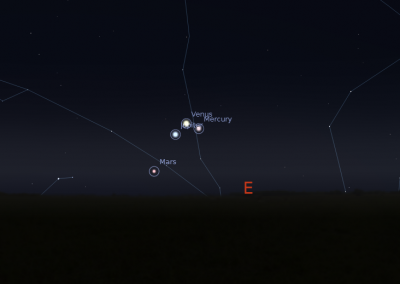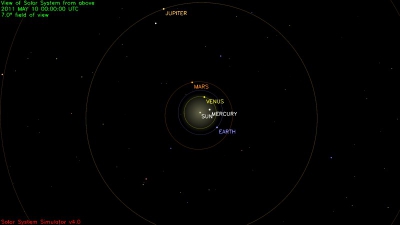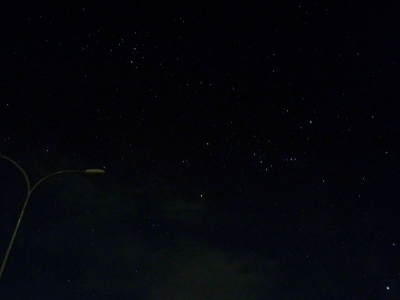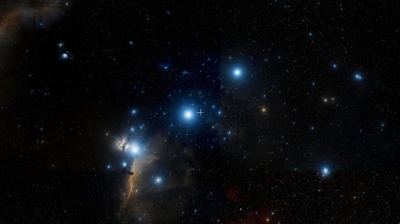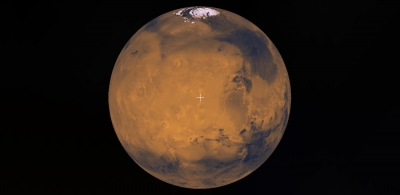Monday, May 9. 2011
Great gathering of four planets this week
I've been asked about the gathering of planets in the sky a few times the past several days and especially today since Sun published an article in Dhivehi on their website. Here's some information that may be useful for those curious to catch it in the sky and hopefully clears up some of the misinformation floating about...
Four of the planets in our Solar System (Mercury, Venus, Mars and Jupiter) have been inching closer together since the second half of last month and will appear in the tightest clustering on the 10th and 11th of May. Unfortunately, the four planets first show themselves on the horizon from the East at 4:15 AM in the Maldives. The best hope of catching them all together is around 4:50 AM - 5:05 AM but the glow of the rising Sun, which is following the four planets closely in the sky, may quickly hinder your ability to observe them so near the horizon. There is a good chance of seeing Venus as it is the brightest, followed by Jupiter while the other two planets may be very hard to spot with the naked eye.
Conjunctions of planets like these happen quite often but a conjunction of 4 planets this close together is considered to be rare. The planets appear to be so close together for us observing from the Earth because all the planets in our Solar System have nearly the same plane of orbit and their orbits around the Sun have lined them them up closely within Earth's perspective - for the moment (see image below).
A helpful way to demonstrate or imagine this might be to lay a large object on a table (to represent the Sun), and lay five other small objects (to represent the four planets and the Earth) at different distances away from the large object to represent planets in their orbits. Choose the third small planet object away from the large Sun object, which represents the Earth, and arrange the other small objects so they line up while looking from the perspective of the Earth object but still lie on their own orbital path.
Remember, there is a total lunar eclipse that is visible in the Maldives next month with the penumbral phase beginning at 22:25 PM of 15th June and the total phase beginning at 00:22 AM of 16th June!
Four of the planets in our Solar System (Mercury, Venus, Mars and Jupiter) have been inching closer together since the second half of last month and will appear in the tightest clustering on the 10th and 11th of May. Unfortunately, the four planets first show themselves on the horizon from the East at 4:15 AM in the Maldives. The best hope of catching them all together is around 4:50 AM - 5:05 AM but the glow of the rising Sun, which is following the four planets closely in the sky, may quickly hinder your ability to observe them so near the horizon. There is a good chance of seeing Venus as it is the brightest, followed by Jupiter while the other two planets may be very hard to spot with the naked eye.
Conjunctions of planets like these happen quite often but a conjunction of 4 planets this close together is considered to be rare. The planets appear to be so close together for us observing from the Earth because all the planets in our Solar System have nearly the same plane of orbit and their orbits around the Sun have lined them them up closely within Earth's perspective - for the moment (see image below).
A helpful way to demonstrate or imagine this might be to lay a large object on a table (to represent the Sun), and lay five other small objects (to represent the four planets and the Earth) at different distances away from the large object to represent planets in their orbits. Choose the third small planet object away from the large Sun object, which represents the Earth, and arrange the other small objects so they line up while looking from the perspective of the Earth object but still lie on their own orbital path.
Remember, there is a total lunar eclipse that is visible in the Maldives next month with the penumbral phase beginning at 22:25 PM of 15th June and the total phase beginning at 00:22 AM of 16th June!


